Left-handed musicians face different challenges when playing an instrument than their right-handed peers. Some obstacles are real, others are simply myths. The good news first: times are changing. No need to be discouraged or re-educated. Simply clear the lefty stumbling blocks out of the way. You’ll find the right instrument here. 😉
There is a long list of left-handed megastars in all genres of music, from Paul McCartney, Jimi Hendrix, and Kurt Cobain on guitar or bass to Ringo Starr and Phil Collins on drums to the great composers Bach, Beethoven, and Mozart. This can and should encourage you not to let yourself be bent. Here are a few of the supposed difficulties you might encounter: 🎹🥁
1. Playing a right-handed guitar
Sometimes left-handed players have no choice but to string a right-handed guitar in reverse order and play the instrument that way. In fact, most lefties experience this at one point or another, be it for financial reasons, because there is no other instrument available, or simply because of aesthetic preferences when choosing a guitar. But it’s no secret that playing right-handed instruments “upside down” has its pitfalls.
The tone and volume controls are suddenly at the top. As it’s almost impossible to avoid touching them with your left forearm, you risk adjusting them unintentionally. Even more annoying is that the cable and socket are also located at the top. Hitting it with your left elbow can cause cracking noises or – even worse – damage the plug. Not to mention that the strings are not in tune – in fact, they can’t be because the bridge is upside down. Plenty of reasons to buy a left-handed guitar. Good thing that there are now plenty of them from all the popular brands.

2. Up & down are reversed on the instrument
This point applies to stringed and keyboard instruments in particular. Some say that the brain gets a little confused. For example, playing an ascending scale on a piano means moving to the right, whereas playing a descending scale means moving to the left. Of course, the piano keyboard can’t simply be turned around, with the exception of the rare left-handed pianos. But this shouldn’t be a real stumbling block for your brain, even with a conventional keyboard. As a pianist, you play with both hands anyway. The notes couldn’t care less which hand you play them with. And with the guitar and other stringed instruments, all it might take is rewriting the tablature. And yet another stumbling block out of the way.

3. It might take a little longer to get going
As a musician, you probably get excited as soon as you see an instrument. Like a dog that goes nuts when it sees a ball or a rubber toy, you really want to play it. Unfortunately, this often doesn’t work for lefties. You may be disappointed because it is an instrument for right-handers.

Warwick
Corvette RB 4 Med Scale BK LH
You want to play a piece and experience how the instrument feels in your hands, only to find that it’s upside down! So much for a spontaneous party. And then there are those fabulous moments when you realise that you’re not so alone because you’re marvelling at a lefty instrument. This way, you can get started immediately – no need to wait to get excited.
4. Readability issues: Reversed fingering charts
The average right-handed person has little trouble understanding fingering charts. Basically, what a right-handed person sees on paper is what they see when they look at the fretboard and their – left – fretting hand. But for you as a left-hander, the fingering chart doesn’t make sense, because you see the low E string on paper where the high E string is on the fretboard. Left-handed fingering charts do exist, but they are much rarer.
As a left-hander, it’s best to learn how to read right-handed charts from the beginning of your musical training, as the “mental reversing of strings” becomes second nature. But times are moving on, so don’t worry. For example, there are now apps that can reverse chord diagrams for left-handers.
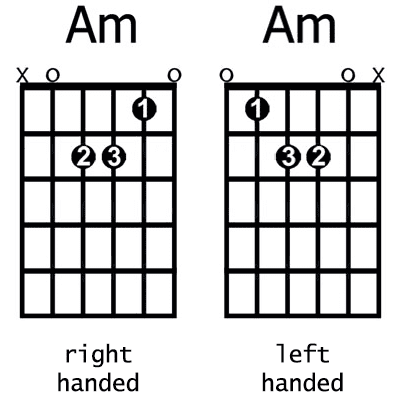
5. Left-handed instruments: It’s “all-right”
It’s no secret: this world is designed for right-handers. This also applies to instruments. As right-handers are in the majority, they also have a larger selection of instruments available to them.
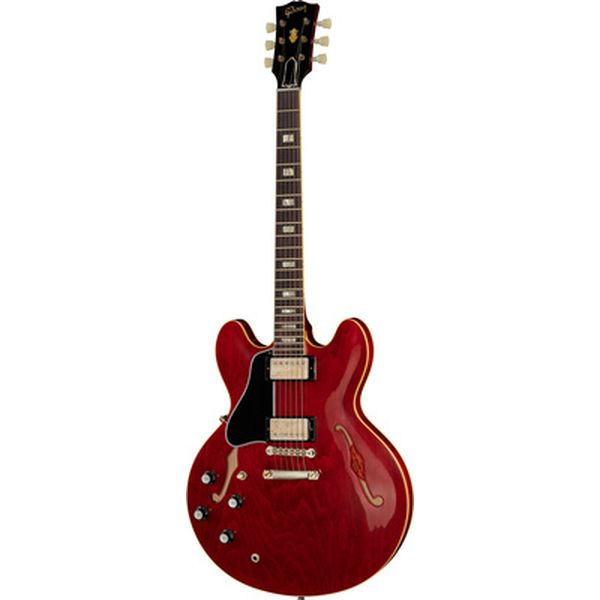
Gibson
1964 ES-335 Reissue CH VOS LH
If you’re looking for left-handed guitars, we recommend checking out Harley Benton. Our own brand offers a huge range of lefty guitars. We care about lefties and strive to constantly expand our range in this area.
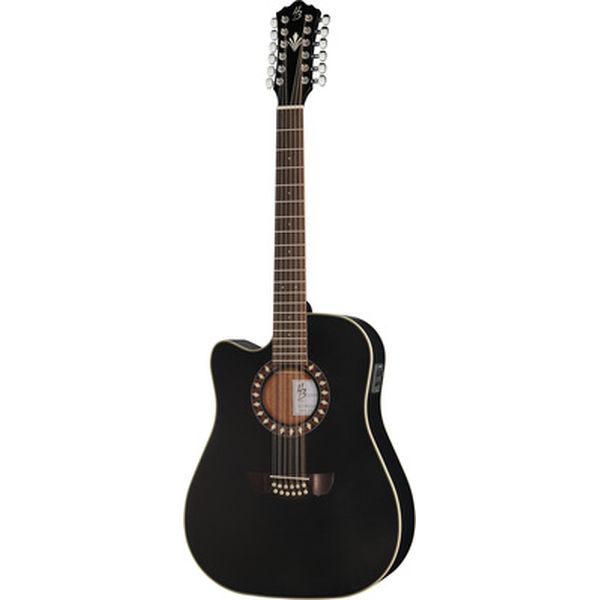
Harley Benton
Custom Line CLD-10SCE-12BKS LH
If you need help finding the perfect instrument, feel free to call us, send us an email, or simply drop by and try them out. Left-handed guitars and other lefty instruments are available for testing in our Treppendorf shop. Why not take a look? 😉
Find our range of left-handed instruments here!
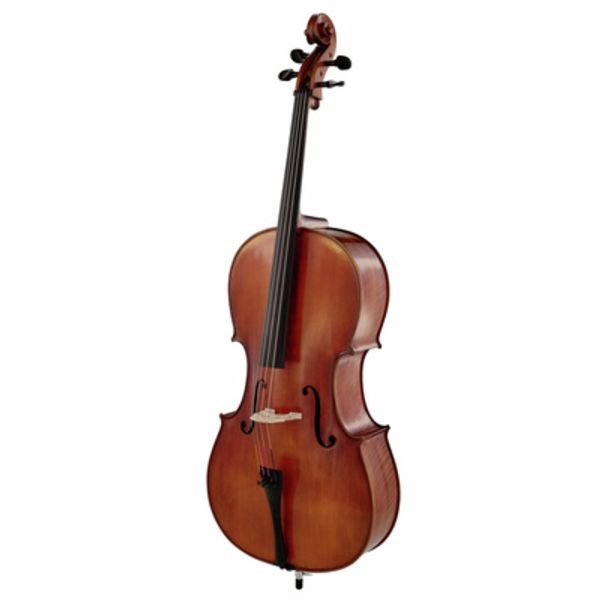
Gewa
Germania 11L Berlin Ant. Cello
If you need help finding the perfect instrument, feel free to call us, send us an email, or simply drop by and try them out.

Left-handed guitars and other lefty instruments are available for testing in our Treppendorf shop. Why not take a look? 😉
6. A left-handed mess – that’s just the way it is
Here’s a problem that nearly every left-hander has experienced firsthand, often in primary school: when you write on a piece of paper, your hand smudges what you’ve just written. Not only do you now have ink all over your hand and fingers, but the letters and words you’ve written are decorated with an elegant “motion blur” effect.
The same applies to writing notes or tabs by hand on a staff. Pencil lead is just as annoying. Like most languages, musical notation is written from left to right. You can either live with the “smearing” obstacle or use digital music notation software.

7. Standing in the way on stage
If you play a left-handed stringed instrument such as guitar, bass, mandolin, banjo, or ukulele and plan to play live, you should perhaps consider positioning yourself on the right side of the stage within the band. This is also called “stage right” or “house left”, depending on the direction of view. Otherwise, you run a higher risk of your headstock colliding with that of another instrument.
Headstocks are fragile, and it’s no fun if they break. On the other hand, it’s easier to make eye contact with your bandmates if your headstock is facing the centre of the stage. Not an easy decision. A typical lefty problem? Nope, guess what: the right-handers also have to ask themselves this question at every gig.
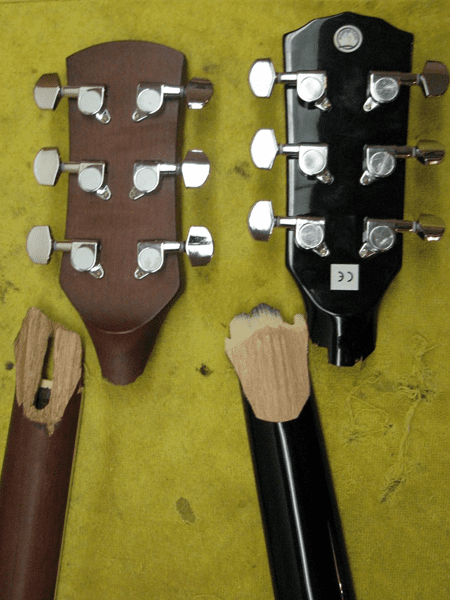
8. Do your own setup & repairs
Not many guitar technicians are left-handed or familiar with lefty guitars. To determine if a guitar feels good in terms of playability, intonation, and other factors, the technician needs to be able to play it for a few minutes to judge the handling. That’s why some left-handed players only trust left-handed technicians or luthiers to adjust or repair their instruments on a professional level, and these people are hard to find.
You might find that you need to learn to do it yourself. Extra work for left-handers! But think of it this way: isn’t that actually an advantage? You get a chance to learn a new skill and become friends with your instrument in a very special way.

9. Lefty problems in the orchestra
Prejudices against left-handed musicians also exist in orchestras. For example, it is said that left-handed cellists and other string players need too much space and that it looks “(…) chaotic if not all the bows go in the same direction.” This goes as far as orchestras allegedly not accepting lefties. In fact, the issue is omnipresent in orchestras. Naturally, musicians would prefer to use “the hand of their heart”.
However, due to issues like visual conformity and the limited space in the orchestra pit, classical music is still lagging behind when it comes to equality for left-handers. “Re-educated” musicians are still common in symphonic music, much more so than in other genres. Unfortunately, this stumbling block remains a real obstacle.

10. Do left-handed drummers have to work harder?
If you play drums with the hi-hat on the right side of the kit and play the bass drum with your left foot, you either need your own kit or have to rearrange everything before you can get started in the rehearsal room or on stage. That’s why some say that left-handed drummers have to work harder than their right-handed colleagues. But is that so? That only applies to the setup.
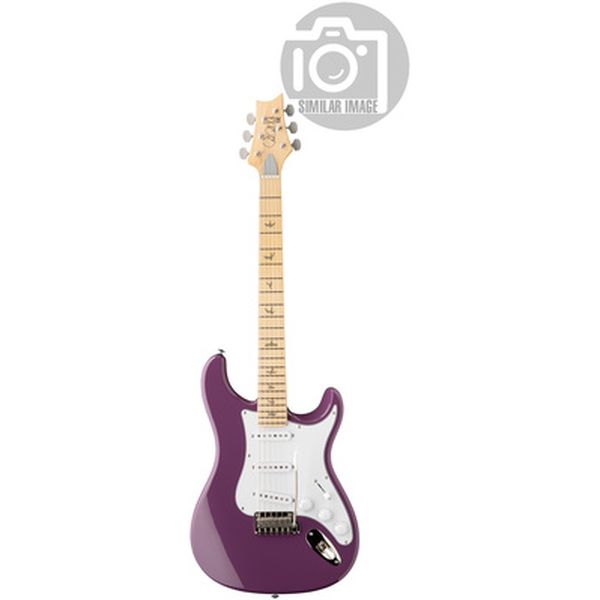
PRS
SE Silver Sky Summit Purple LH
It’s true that you can’t simply use a right-handed player’s drum set at a festival or music school. But once the kit is set up, the job will be just as sweaty for both of you.

Initiative: Overcoming conventions
“Bow right, viola left” is still often said for string instruments, “left up, right down” for woodwinds. And the valves of the vast majority of brass instruments are operated with the right hand. Particularly in the classical field, the distribution of the hands on the instrument – beginning with instrument making – is relatively strictly defined. To overcome these outdated conventions, the “Linksgespielt” initiative has been formed in Germany. Its motto: “When the left hand calls the tune”.
Lefthand digitised: With a MIDI mirrored keyboard
In the digital age, keyboard players have the option of “flipping” a keyboard or electric piano. Blüthner, for example, offers stage pianos with an integrated left-handed mode. However, the hurdle remains that even such models do not have volume compensation. The high notes in the left hand sound too quiet, while the low notes on the right are too loud. To change this, Laila Kirchner of linksgespielt.de has developed a solution to this problem using the MIDI Translator feature of the BomeBox: the KeyboardMirror programme ensures that not only the keyboard itself is mirrored, but also the velocity of the keys and thus their volume. With the BomeBox and the programme, any MIDI-capable electric piano or keyboard can be turned into a left-handed instrument.
Further reading
Blog article “Making music – left-handed!”
Instruments for left-handers on thomann.de
Left-hand playing goes digital: Keyboard mirroring via MIDI
In the digital age, keyboard and e-piano players now have the option to “flip” their instrument’s layout. For example, Blüthner stage pianos come with an integrated left-hand mode. The sticking point, however, is that even in these models there is no automatic volume balancing.
The left-side high notes tend to sound too quiet, while the right-side low notes are too loud. To address this, Laila Kirchner of linksgespielt.de has developed a solution to tackle the issue head-on: using a BomeBox loaded with the KeyboardMirror MIDI Translator, not only is the keyboard mirrored via velocity, but the key weighting and therefore the volume response is reversed as well. With the BomeBox and the software, any MIDI-capable e-piano or keyboard can be transformed into a true left-handed instrument.

Bome
BomeBox
Left-handers day: Your feedback
What experiences have you had as a lefty or with lefties? Let us know in the comments.
#leftyday #lefthandersday
















Comments 11